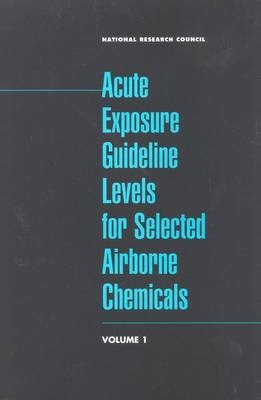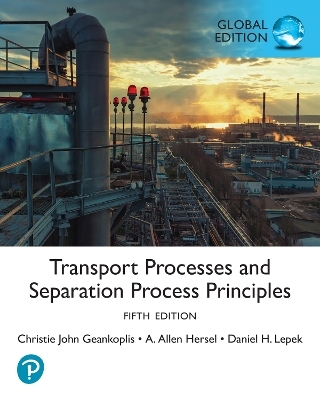
Acute Exposure Guideline Levels for Selected Airborne Chemicals
Volume 1
Seiten
2001
National Academies Press (Verlag)
978-0-309-07399-8 (ISBN)
National Academies Press (Verlag)
978-0-309-07399-8 (ISBN)
- Titel ist leider vergriffen;
keine Neuauflage - Artikel merken
Reviews toxicity documents on five chemicals - chlorine, hydrogen chloride, hydrogen fluoride, toluene, and uranium hexafluoride - for their scientific validity, comprehensives, internal consistency, and conformance to the 1993 guidelines report.
In the Bhopal disaster of 1984, approximately 2,000 residents living near a chemical plant were killed and 20,000 more suffered irreversible damage to their eyes and lungs following the accidental release of methyl isocyanate. This tragedy served to focus international attention on the need for governments to identify hazardous substances and assist local communities in planning how to deal with emergency exposures. Since 1986, the U.S. Environmental Protection Agency has been tasked with identifying extremely hazardous substances and, in cooperation with the Federal Emergency Management Agency and the Department of Transportation, assist local emergency response planners. The National Advisory Committee on Acute Exposure Guideline Levels for Hazardous Substances was established in 1995 to develop acute exposure guideline levels (AEGLs) for high priority toxic chemicals that could be released into the air from accidents at chemical plants, storage sites, or during transportation. This book reviews toxicity documents on five chemicals—chlorine, hydrogen chloride, hydrogen fluoride, toluene, and uranium hexafluoride—for their scientific validity, comprehensives, internal consistency, and conformance to the 1993 guidelines report.
Table of Contents
Front Matter
Introduction
Roster of the National Advisory Committee for Acute Exposure Guideline Levels for Hazardous Substances
Anilene: Acute Exposure Guideline Levels
Arsine: Acute Exposure Guideline Levels
Monomethylhydrazine: Acute Exposure Guideline Levels
Dimethylhydrazine: Acute Exposure Guideline Levels
In the Bhopal disaster of 1984, approximately 2,000 residents living near a chemical plant were killed and 20,000 more suffered irreversible damage to their eyes and lungs following the accidental release of methyl isocyanate. This tragedy served to focus international attention on the need for governments to identify hazardous substances and assist local communities in planning how to deal with emergency exposures. Since 1986, the U.S. Environmental Protection Agency has been tasked with identifying extremely hazardous substances and, in cooperation with the Federal Emergency Management Agency and the Department of Transportation, assist local emergency response planners. The National Advisory Committee on Acute Exposure Guideline Levels for Hazardous Substances was established in 1995 to develop acute exposure guideline levels (AEGLs) for high priority toxic chemicals that could be released into the air from accidents at chemical plants, storage sites, or during transportation. This book reviews toxicity documents on five chemicals—chlorine, hydrogen chloride, hydrogen fluoride, toluene, and uranium hexafluoride—for their scientific validity, comprehensives, internal consistency, and conformance to the 1993 guidelines report.
Table of Contents
Front Matter
Introduction
Roster of the National Advisory Committee for Acute Exposure Guideline Levels for Hazardous Substances
Anilene: Acute Exposure Guideline Levels
Arsine: Acute Exposure Guideline Levels
Monomethylhydrazine: Acute Exposure Guideline Levels
Dimethylhydrazine: Acute Exposure Guideline Levels
Subcommittee on Acute Exposure Guideline Levels, Committee on Toxicology, Board on Environmental Studies and Toxicology, National Research Council
| Erscheint lt. Verlag | 10.1.2001 |
|---|---|
| Verlagsort | Washington |
| Sprache | englisch |
| Maße | 152 x 229 mm |
| Themenwelt | Technik ► Umwelttechnik / Biotechnologie |
| ISBN-10 | 0-309-07399-5 / 0309073995 |
| ISBN-13 | 978-0-309-07399-8 / 9780309073998 |
| Zustand | Neuware |
| Haben Sie eine Frage zum Produkt? |
Mehr entdecken
aus dem Bereich
aus dem Bereich
Kommentar der DIN 15905-5, LärmVibrationsArbSchV und …
Buch | Softcover (2023)
DIN Media (Verlag)
58,00 €
Buch | Softcover (2023)
DIN Media (Verlag)
75,40 €
Buch | Softcover (2024)
Pearson Education Limited (Verlag)
75,95 €


